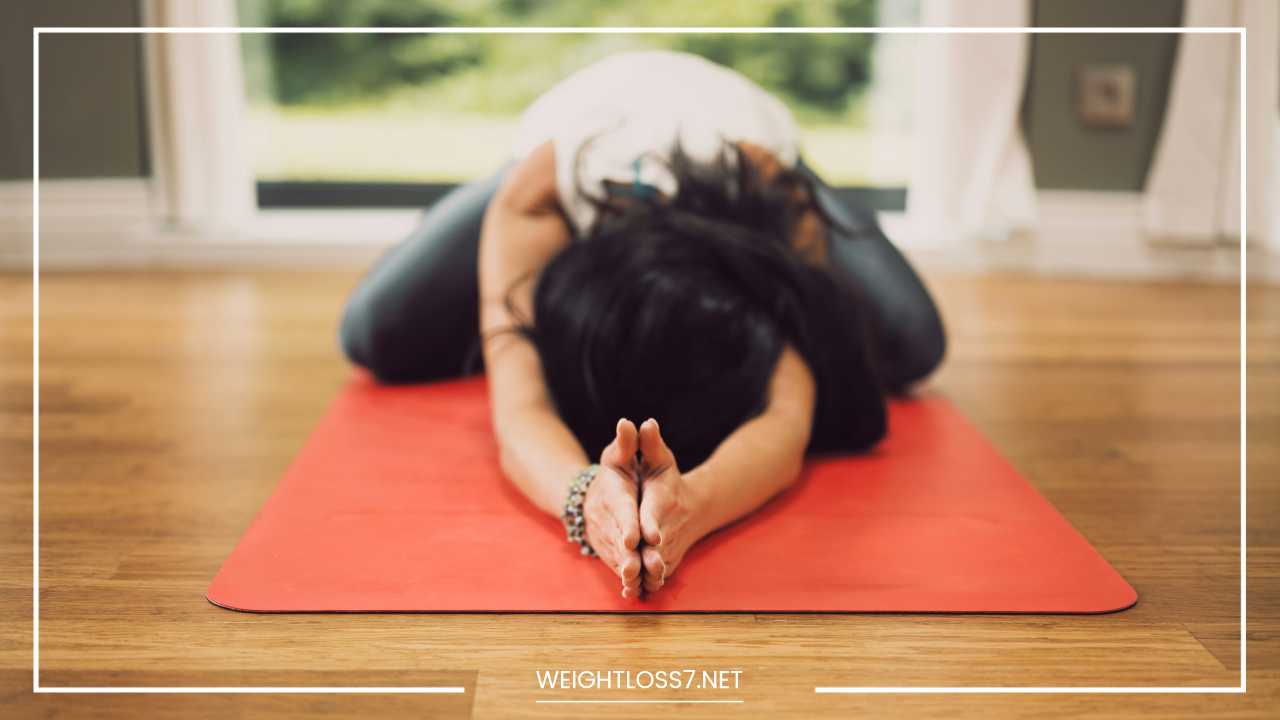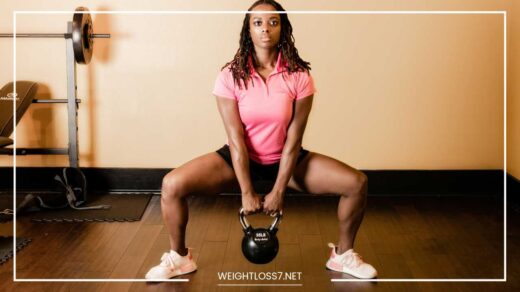Yoga at Home: Your Path to Wellbeing

Yoga at Home
Yoga at Home: Your Gateway to Physical and Mental Wellbeing
In the relentless whirl of our modern world, prioritizing self-care can feel like an extravagant indulgence. Between the demands of work, family, and social obligations, carving out sacred space for personal well-being can seem like a distant dream.
But what if there existed a practice that could enhance both your physical and mental health, all from the comfort of your own home? Look no further than yoga.
Yoga, an ancient practice with roots in India, is more than just a series of physical postures (asanas). It encompasses a holistic approach to well-being, weaving together physical postures, breathing exercises (pranayama), meditation, and ethical principles (yamas and niyamas).
While yoga is often lauded for its ability to improve flexibility and build strength, its benefits extend far beyond the physical realm. Regular yoga practice can significantly reduce stress, improve sleep quality, boost mood, and cultivate a sense of overall well-being.
The true beauty of yoga lies in its adaptability. It can be practiced anywhere, anytime. You don’t need a fancy gym membership or a room full of expensive equipment. All you require is a comfortable space and a willingness to explore.
Whether you’re a complete novice or a seasoned yogi, there’s a unique yoga practice waiting to be discovered, perfectly tailored to your needs and preferences.
Unveiling the Advantages of Home Yoga Practice
The benefits of practicing yoga at home are numerous and compelling. Here’s a deeper dive into why rolling out your yoga mat in your living room might be the key to unlocking a healthier, happier you:
- Convenience Reigns Supreme: Perhaps the most significant perk of home yoga is its sheer convenience. You can tailor your practice to your schedule, eliminating the need to commute to a studio or class. No more frantic rushing out the door or feeling pressured to arrive on time for a session that might not quite fit your needs.
- Embrace the Privacy You Deserve: For some individuals, practicing yoga in a group setting can feel intimidating. The home environment provides a space for you to relax, let go of self-consciousness, and explore the postures at your own pace. This is particularly beneficial for beginners who are still building confidence and comfort in their practice.
- Craft a Practice Just for You: When you practice yoga at home, you become the architect of your own experience. You can tailor your practice to address your specific needs and preferences. Whether you’re seeking a quick and energizing morning routine to jumpstart your day or a longer, more restorative evening session to unwind after a long day, you have the freedom to design a practice that truly works for you.
- Cost-Effectiveness: Yoga studio memberships can be expensive, especially if you practice regularly. By opting for home yoga, you can save money on memberships and class fees. A wealth of free online yoga resources awaits you, or you can invest in a few yoga DVDs or instructional videos that resonate with your style and goals.
- Deepen Your Mind-Body Connection: Yoga is a holistic practice that fosters a profound connection between the mind and body. Practicing at home allows you to create a sacred space where you can truly focus inwards, fostering self-awareness and deepening your connection with yourself.
Embarking on Your Home Yoga Journey: A Beginner’s Guide
If you’re new to yoga and intrigued by the prospect of practicing at home, here are some valuable tips to help you get started on the right foot:
- Finding Your Perfect Practice Space: Look for a quiet, clutter-free area where you can move freely without restriction. Ideally, the space should be well-ventilated and maintain a comfortable temperature. If you have hardwood floors, consider investing in a yoga mat for added cushioning and grip.
- Gathering Essential Props: While a lot of equipment isn’t necessary for yoga practice, a few props can be incredibly helpful, especially for beginners. These include a yoga mat, blocks, straps, and a bolster. Blocks can be used to provide support in certain postures, while straps can help you achieve deeper stretches. A bolster can be used for restorative postures or for additional comfort in seated postures.
- Selecting a Beginner-Friendly Style: There’s a vast array of yoga styles, each with its own focus and intensity level. If you’re new to yoga, it’s best to start with a beginner-friendly style such as Hatha yoga, Vinyasa yoga, or Yin yoga. Hatha yoga is a gentle style that focuses on basic postures and breathing exercises. Vinyasa yoga is a more flowing style that links postures together with breath. Yin yoga is a passive style that holds postures for longer periods of time, allowing for deep tissue relaxation.
- Harnessing the Power of Online Resources: The internet is a treasure trove of free and paid online yoga resources. You can find a variety of yoga classes, tutorials, and instructional videos on websites like YouTube, Yoga Journal, DoYogaWithMe, Yoga International, and Alo Moves. Many yoga studios also offer online class packages, allowing you to virtually attend classes led by experienced instructors.
-
Selecting the Right Online Teacher: With so many online options available, choosing the right instructor can feel overwhelming. Here are some pointers to guide you:
- Consider your experience level: Look for instructors who cater to beginners, especially if you’re new to yoga. They will provide clear instructions, modifications for different abilities, and a focus on proper alignment.
- Explore different teaching styles: Some instructors offer a more gentle and calming approach, while others have a more energetic and dynamic style. Experiment with a few different teachers to find one whose style resonates with you and keeps you engaged.
- Read reviews and recommendations: Online reviews and recommendations from other yogis can be a valuable resource. See what others have to say about a particular instructor’s teaching style, clarity, and overall class experience.
-
Building a Supportive Online Community: The yoga community extends far beyond the physical studio space. Many online yoga platforms offer forums, social media groups, and online communities where you can connect with other yogis, ask questions, share experiences, and offer support to one another. This sense of community can be incredibly motivating and can help you stay accountable on your yoga journey.
Deepening Your Practice: Essential Yoga Poses for Beginners
As you embark on your home yoga practice, familiarizing yourself with some fundamental yoga postures can be incredibly beneficial. Here are a few beginner-friendly poses to get you started:
-
Mountain Pose (Tadasana): This foundational pose helps cultivate proper alignment and body awareness. Stand tall with your feet hip-width apart, press your toes firmly into the mat, and engage your core muscles. Lengthen your spine and roll your shoulders back and down. Take a few deep breaths in this pose, focusing on grounding yourself.
-
Downward-Facing Dog (Adho Mukha Svanasana): This ubiquitous pose strengthens the entire body, improves circulation, and stretches the hamstrings and calves. Begin on all fours, tuck your toes under, and push your hips back and up towards the ceiling, forming an inverted V shape. Keep your heels pressing towards the ground and lengthen your spine. Hold for several breaths.
-
Plank Pose (Chaturanga Dandasana): This challenging pose strengthens the core, shoulders, and arms. From Downward-Facing Dog, lower your body down to a push-up position, keeping your elbows close to your body and your core engaged. Hold for a few breaths, then return to Downward-Facing Dog.
-
Cat-Cow Pose (Marjaryasana-Bitilasana): This gentle flowing movement sequence helps improve spinal mobility and flexibility. Start on all fours with your hands shoulder-width apart and your knees hip-width apart. As you inhale, arch your back, dropping your belly towards the mat and gazing upwards (cow pose). As you exhale, round your spine, tucking your chin to your chest (cat pose). Flow between these movements with your breath.
-
Warrior I Pose (Virabhadrasana I): This empowering pose strengthens the legs, core, and glutes, and improves balance. Step one foot back with a large lunge, bending your front knee at a 90-degree angle. Keep your back heel lifted and your torso upright. Raise your arms overhead and gaze upwards. Hold for several breaths on each side.
-
Child’s Pose (Balasana): This restorative pose provides a moment of relaxation and release. Sit back on your heels, fold forward, and rest your forehead on the mat. Stretch your arms out in front of you or alongside your body. Breathe deeply and hold for as long as you need.
Remember, these are just a few basic poses to get you started. There are countless yoga postures waiting to be explored. As you progress in your practice, you can gradually incorporate more challenging postures while always prioritizing proper alignment and listening to your body.
Additional Tips for Enhancing Your Home Yoga Practice
Here are some additional practices to elevate your home yoga experience:
-
Set the Mood: Create a calming and inviting atmosphere for your practice. Dim the lights, light some candles, or diffuse essential oils with a relaxing aroma. Put on some calming music if that enhances your experience.
-
Warm Up Before You Begin: Just like any physical activity, it’s important to warm up your body before practicing yoga. Spend a few minutes performing gentle stretches or light cardio to prepare your muscles for the work ahead. This will help to prevent injuries and improve your overall range of motion.
-
Cool Down and Relax Afterward: Don’t neglect the importance of a proper cool-down after your practice. Incorporate some gentle stretches, relaxing postures like Child’s Pose or Savasana (Corpse Pose), and slow, deep breaths. This allows your body to gradually transition out of the practice and promotes relaxation.
-
Focus on Your Breath (Pranayama): Breath is the cornerstone of yoga practice. It acts as a bridge between the mind and body, and focusing on your breath can significantly enhance your experience. Pay attention to the natural rhythm of your breath, and strive for slow, deep, and controlled inhalations and exhalations throughout your practice.
-
Be Kind to Yourself: Yoga is a journey, not a destination. It’s important to approach your practice with kindness and compassion. Don’t get discouraged if you can’t achieve perfect postures right away. Every body is different, and flexibility and strength will develop over time. Focus on listening to your body and honoring its limitations.
-
Celebrate Your Progress: Take time to acknowledge your progress, no matter how small it may seem. Celebrate the fact that you’re showing up for yourself and taking steps towards a healthier and happier you.
-
Seek Inspiration: Surround yourself with positive influences. Read yoga books and articles, follow inspiring yoga instructors on social media, or watch yoga documentaries. Immersing yourself in the world of yoga can keep you motivated and provide valuable insights.
-
Make it Fun!: Yoga shouldn’t feel like a chore. If you’re not enjoying your practice, it’s time to make some adjustments. Experiment with different styles of yoga, try a new online instructor, or practice with a friend. Find what makes yoga enjoyable for you and keep it playful!
Integrating Yoga into Your Daily Life: A Holistic Approach
Yoga’s influence extends far beyond the yoga mat. The practice encourages mindfulness, which can be incorporated into your daily life to create a sense of calm and well-being. Here are some ways to weave the principles of yoga into your everyday routine:
-
Mindful Movement Throughout the Day: Be present in your movements throughout the day, whether it’s walking, climbing stairs, or doing chores. Focus on proper alignment and take slow, deliberate breaths.
-
Mindful Eating: Practice mindful eating by savoring your food, chewing slowly, and appreciating the flavors and textures. Avoid distractions like television or your phone while eating.
-
Mindful Communication: Approach your interactions with others with mindfulness. Listen attentively, communicate clearly, and cultivate compassion in your words and actions.
-
Gratitude Practice: Take time each day to reflect on the things you’re grateful for. This can be a simple mental exercise or journaling your thoughts. A grateful heart fosters a sense of positivity and well-being.
By incorporating these practices into your daily life, you can extend the benefits of yoga beyond the mat and cultivate a more mindful and present way of living.
Final Word: Your Gateway to a Fulfilling Life Awaits
Yoga is a gift, a practice that offers a path to physical and mental well-being. By carving out space for yoga at home, you’re creating a sanctuary for yourself, a place to nurture your body, quiet your mind, and connect with your inner spirit.
So, roll out your yoga mat, take a deep breath, and embark on a transformative journey towards a healthier, happier you.
Remember, the magic of yoga unfolds not just in the poses themselves, but in the way it allows you to connect with your authentic self and embrace life with greater joy and purpose.

















